By Terry Foxx
The fire had been fierce, burning everything in its wake. The soil was blackened and the forest an eerie quiet except for the occasional buzzing of the wood borers. As I stood there, I grieved the loss. Would I ever walk through a beautiful aspen grove again? Would I witness the changing colors from green to yellow or red?
Little drops of rain began to fall, and the burned soil moved with the ripples of water exposing the mass of roots just below the surface. And amazingly, a small sprout waved in the wind, the two or three green leaves trembled. Life was beginning anew!
As I looked at that aspen sprout, I was amazed. It was only a month from the raging fire that had stripped the area of the tall aspen groves and the majestic pines that had begun to top over the aspens. As I looked around, I saw sprouts springing forth and the aspen grove was renewing itself.
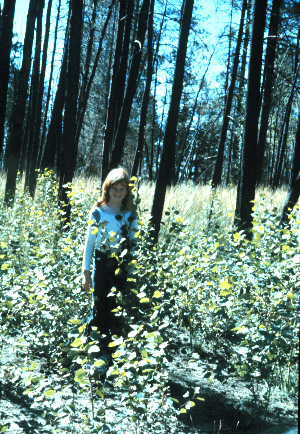
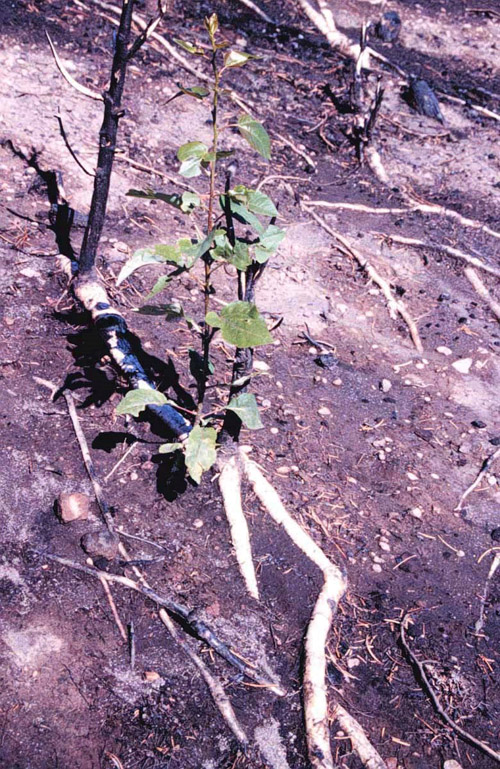
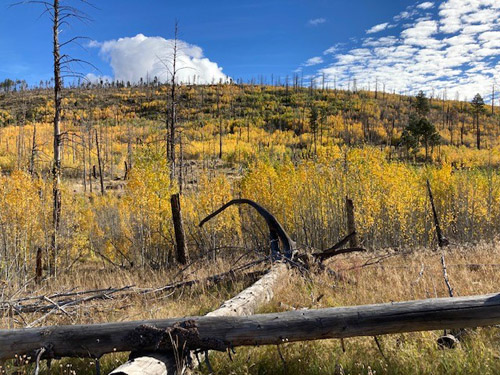
I remembered the days when I had walked the trails through the green of the grove. I had sat in the grove, looking up at the lacy, trembling leaves, thinking how appropriate is the scientific name Populus tremuloides. I remembered the picnics we had as we sat on the blanket reading a good book or discussing world issues.
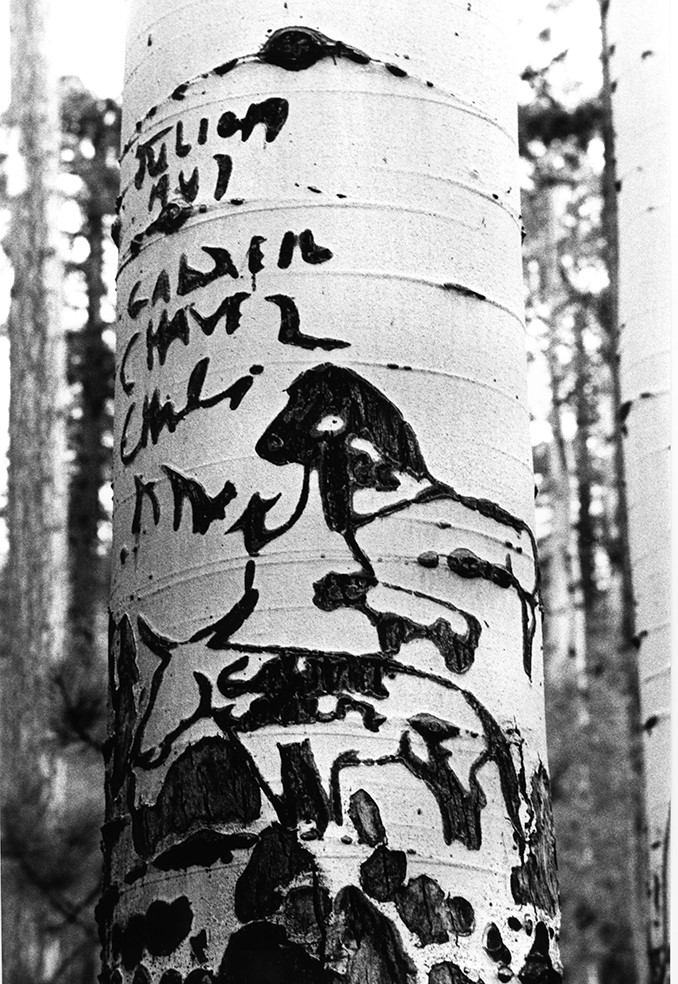
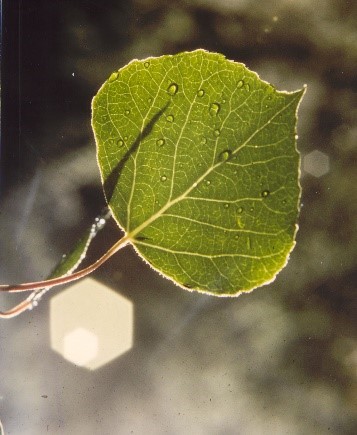
As I pondered, I remembered those who had come before. The old trees, now burned, had been messages from the past. Long ago (1800s) the sheep camps consisted of a herder, couple of dogs, and hundreds of thousands of sheep and a vast landscape devoid of any other human beings. This lonely existence seeped into the sheepherder’s life. To pass the time they carved their names, crosses, or drawings into the soft gray-white bark leaving a piece of history: name, town, and time. I remembered those who studied those names and recorded past dates to validate the lives of those lonely sheepherders. The carvings were called arboglyphs, dendroglyphys, or aspen art, an unexpected piece of history.
Among the burned aspen where the remnants of evergreen trees less tolerate of the bright sun: ponderosa pine, white fir, Douglas fir, spruce. I heard the groaning of the burned trees and the drumming of the woodpeckers, and they searched for the insects that were busy consuming the wood, kicking sawdust from tiny holes.
How often had I taken a leaf-peeping ride through those mountains in late September and early October. The green leaves turned to gold as the darkness of night increased and the temperature cooled. The production of chlorophyll slowed and the yellow of the carotins showed through the trembling leaves setting the grove into a sunny yellow, contrasted against the varying green of the pines (evergreens). Yet, in the yellow, I noted that small patches of aspen seemed to be red. But why? Aren’t aspen leaves all green turning yellow. I had learned that anthocyanins of the trapped excess plant sugar cause the red leaves.
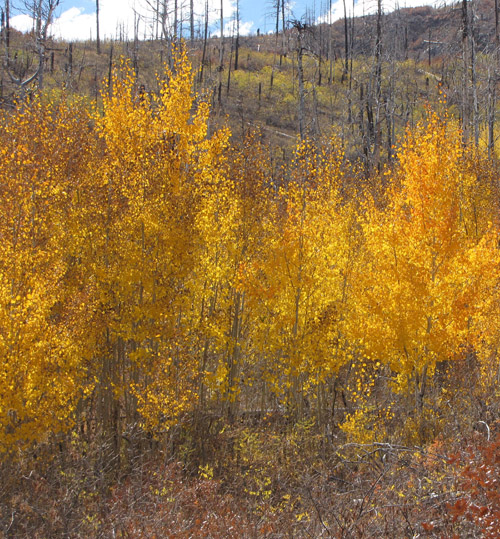
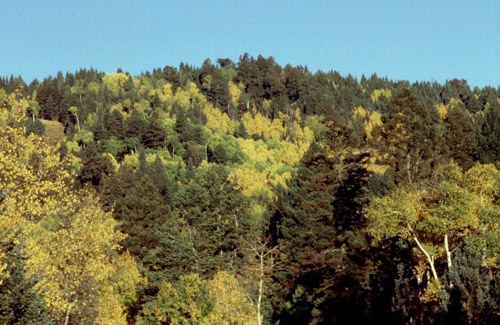
As I observed the aspens, some years it seemed the colors were more intense. I learned that color is influenced by environmental conditions: dry and early summers, good rainfall in the late summer, and many warm sunny days, and cool crisp evenings. How intense will the color be this year?
As I stood there in that landscape blacken by fire, I was amazed at the sprouts coming from the roots of the grove that once was. I had hope for I knew they would someday be a new grove of aspen. I knew the golden trembling leaves would fall to the ground to give the trees rest through the snowy winter months. The aspen’s ability to regenerate meant that it responded to fire and disturbance with renewal, not death.
OUT OF THE ASHES An early morning walk along trails once familiar Trees, dark shadows before the breaking dawn. They stand like ghostly sentinels to what was and will be. The sun rises, sprinkling early morning light on blackened landscapes Dark ash, sunlit sprouts, emerald grass, flowers adding color. Breathless awe and wonder. For out of the blackened landscape, new life arises. - Terry Foxx La Mesa Fire 1977

Terry, thank you so much for this lovely article, so poetic and informative at the same time. And what a great dendroglyph!